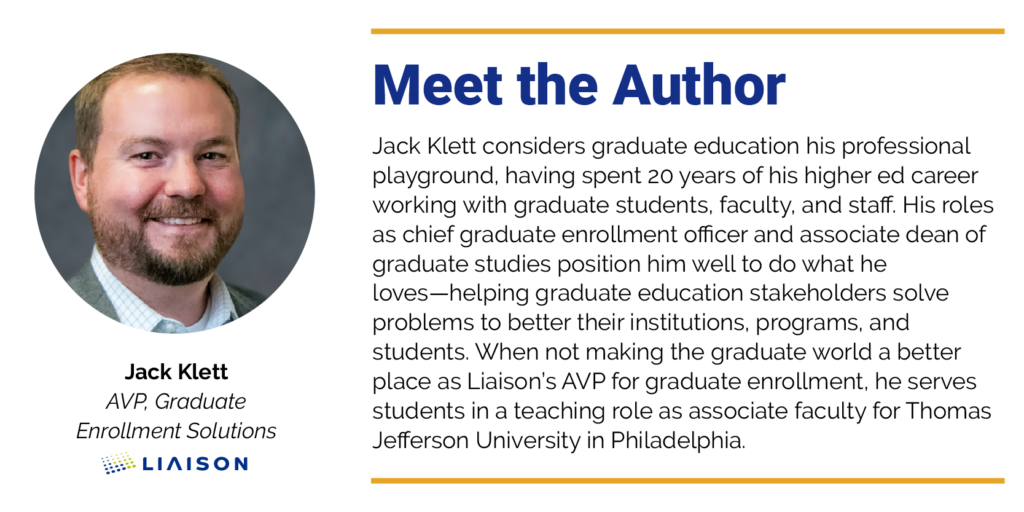The other day, I came across an old video from 1994. Television morning show hosts Katie Couric and Bryant Gumbel were attempting to understand the internet. Yes, the internet. Gumbel says with frustration and annoyance, “What is the internet anyway?” Couric then asks a producer, “Allison, can you explain what internet is?”
From our perspective today, this video is hilarious! It is also very meta. Little did they know that their whole conversation would one day be readily available via… the internet. And, to what would be Couric’s complete shock, their conversation is accessible without a phone line.
1994 was a transformational year for me, and not because of this conversation from the Today Show. That year, I found myself on campus as a very green college first-year student. Come to think of it, from that moment on, I would never go a single year without being on a college campus. Yet, in that moment, how did I find myself there? Neither of my parents attended college: my dad opted for Navy service and my mom was at home caring for my older brothers.
Well, months earlier I was in my high school guidance office leafing through a big catalog of colleges. Each page highlighted a different school, and some had these paper inquiry cards still attached. I ripped one out, filled out the card, and dropped it in the mail. No postage required. Ten months later, there I was. I was a customer of Rider University obtained through traditional print mass marketing. Not a single digital thing about it.
Fast-forward 30 years, and things have changed beyond Katie Couric’s wildest notion. Imagine how frustrated and annoyed Bryant Gumbel must be today! I can hear the 2024 version of their conversation. Gumbel says with frustration and annoyance, “What is the AI anyway?” Couric follows, “Allison, can you explain what AI is?” Yes, we’ve come very far from college catalogs with tear-out, postage-free cards. What a journey it has been.
From a marketing perspective, it has been quite an evolution. Actually, that word doesn’t seem to capture it. Revolution. What a revolution it has been… and I’m so glad I’ve had a front-row seat as a 25-year enrollment management veteran. Of course, my lens is slightly altered as 20 of those years have been spent in graduate education. Anyone who has been involved in graduate enrollment management (GEM) will tell you that it is its own beast compared to its undergraduate cousin.
So, travel with me, will you? Let’s go back in time and chronicle the revolution: the great paradigm shift in graduate student search.
“What is Graduate Student Search Anyway?”
First, the fundamentals. In the realm of enrollment marketing, the term “graduate student search” refers to the strategic process of identifying and connecting with potential candidates for advanced academic programs, typically at the master’s or doctoral level. This process involves utilizing various tools and methodologies to attract qualified individuals who are seeking to further their education beyond their undergraduate years.
Graduate student search often begins with comprehensive market research to understand the demographics, preferences, and characteristics of the target audience. This may include analyzing data related to academic backgrounds, professional aspirations, and geographic locations. Once the ideal candidate profile is established, enrollment marketers employ a combination of online and offline strategies to reach and engage prospective graduate students.
Online strategies may involve leveraging digital platforms such as social media, search engine marketing, and targeted online advertising. This allows institutions to showcase their graduate programs, highlight faculty expertise, and communicate the unique advantages of their offerings. Additionally, creating compelling content, such as blog posts, videos, and webinars, can play a crucial role in attracting and informing potential graduate students.
Offline strategies may include participating in graduate school fairs, hosting information sessions, and collaborating with academic advisors or career counselors. Building relationships with undergraduate institutions, professional organizations, and industry partners can also contribute to a successful graduate student search.
The ultimate goal of the graduate student search is to identify and attract candidates who not only meet the academic criteria but also align with the values and goals of the graduate programs. By implementing a targeted and personalized approach, enrollment marketers aim to build a diverse and qualified pool of applicants.
Let’s stop there for a moment. This description of graduate student search is certainly not comprehensive, but I feel pretty good about it. If you are doing more, excellent! Get in touch with me at jklett@liaisonedu.com. I would love to learn how you are advancing grad search. If on the other hand, you are not approaching student search in this way for your graduate programs, still get in touch. We can discuss what you are doing and, perhaps, how to get better results.
Alright, now that the fundamentals are complete, it’s time to review the stages of how this graduate student search caterpillar became a digital and AI butterfly.
Traditional Methods (Pre-Internet Era)
Print Media and Direct Mail: In the past, universities relied heavily on print materials such as brochures, catalogs, and direct mail to reach potential graduate students. These materials were often distributed at college fairs, high schools, and other educational events. It turns out my college search wasn’t that different from that of other pre-internet prospective students. There was a lot of print, a lot of mail, and a lot of paper.
Word of Mouth and Referrals: Personal recommendations and word of mouth played a crucial role in attracting graduate students. Networking and referrals from alumni and faculty were essential for spreading information about graduate programs. At this time, faculty were also big fans of posters. Posters were plastered in the undergraduate academic halls detailing graduate programs. Attached were pads. Yes, pads. Each leaf of the pad was an inquiry card. No stamp required.
Emergence of Online Strategies
Websites and Email Campaigns: As the internet became more prevalent (1994—1996), universities started establishing an online presence. Basic websites provided information about graduate programs. Email campaigns became a popular way to communicate with potential students.
Online Portals and Databases: Universities began using online portals and databases to collect and manage prospective student information. This allowed for more targeted communication and streamlined the application process.
While still mass marketing, these “online” capabilities began to expedite the marketing process, while carving out ways to begin to segment and individualize communications. It was clear things were getting far more sophisticated.
Digital Marketing and Social Media
Search Engine Optimization (SEO) and Pay-Per-Click (PPC): With the rise of search engines, universities optimized their online content for search, and some adopted PPC advertising to increase visibility.
Social Media Engagement: Platforms like Facebook, Twitter, and later Instagram and LinkedIn became crucial for universities to connect with prospective students. Social media provided a dynamic space for showcasing campus life, faculty expertise, and program highlights.
Content Marketing and Inbound Strategies
Blogging and Content Creation: Educational institutions embraced content marketing, producing blogs, articles, and videos to inform and engage potential students.
Inbound Marketing Techniques: Universities shifted towards inbound strategies, focusing on attracting interested students through valuable content and experiences rather than traditional outbound methods.
Data Analytics and Personalization
Big Data and Analytics: The use of data analytics became more prevalent in understanding the behavior and preferences of potential graduate students. This allowed for more personalized and targeted communication. Communications could be fine-tuned to include the rationale for an individual’s desire to pursue a graduate degree. Messages would be different depending on whether the learner wished to advance in their current career, make a career change, or create new knowledge in the discipline as an academic.
Marketing Automation: Automation and CRM tools enabled universities to streamline communication, nurture leads, and provide personalized content at scale.
Virtual Engagement and Recruitment
Virtual Tours and Events: Especially in response to global events (like the COVID-19 pandemic), universities increasingly adopted virtual methods for campus tours, information sessions, and recruitment events.
Webinars and Online Workshops: Educational institutions embraced online events, providing opportunities for prospective students to interact with faculty, current students, and alumni virtually. Graduate faculty discovered podcasting and other methods for rapid content creation. Many discovered they actually liked it! After all, this was far better than the days of cold calling from a list of prospective student phone numbers supplied by the graduate admissions office..
A New Era: Predictive Analytics and AI in Higher Education
Artificial Intelligence (AI): Now we find ourselves in a new era with AI in higher education. AI is here, and I recommend everyone buckle up. If the last 30 years went by fast, and they did, we’re now entering warp speed. I see Responsible AI being used every day by Liaison Othot clients. Already we’re witnessing advancements. Some institutions started leveraging AI for predictive analytics, helping identify potential applicants and tailor communication based on individual graduate student preferences and behaviors. Now, AI is making prescriptive recommendations by notifying GEM practitioners of specific actions they can take to increase the likelihood that prospective students will apply and enroll. This is being done right now, and even at the individual applicant level.
The evolution of graduate student search reflects the broader trend in marketing: moving from mass communication to targeted, data-driven, and personalized strategies enabled by incredible advancements in technology. Here is what I love about this space: Today, successful graduate student recruitment often involves a holistic approach, combining traditional elements with cutting-edge digital strategies.
Yes, there is still a role for paper. In fact, sent at the right time with the right message, a printed piece can greatly influence the likelihood of someone enrolling in your graduate program. Need to know when to send it, the content to be included, and precisely who to send it to? Ask your friendly AI. It already knows.

